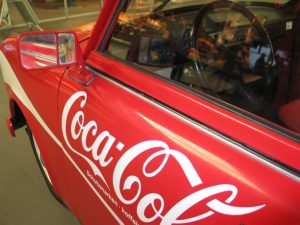
Impressions are a common and important field staff reporting metric in the event marketing industry. Event marketing impressions are essentially how many individuals saw your brand’s advertising at an event. There are multiple channels from which you can measure event marketing impressions. The more you can categorize the number of impressions collected, the more accurately you can determine the ROI of said advertising.
PortMA factors the value of event marketing impressions into our standard ROI model. There are a few categories of impressions that provide insight into what types of advertising are yielding the best return.
Event Impressions
First, I’d like to talk about event impressions. This is basically the number of individuals attending the event who recognized the brand’s advertisements (e.g., the brand footprint). It sounds pretty simple, and that’s because it is, provided you have an accurate count of event attendees. For instance, in events where individuals need a ticket to enter and you have a count of said ticket redemptions. Say you have as close to an accurate count of attendees as possible. Taking that number and multiplying it by the percentage of consumers who are familiar with your brand yields an estimate of the event impressions.
A challenge occurs when brand teams are unable to capture an accurate attendance and provide an estimate. This may be rounded to the nearest five or ten people. Now we’re working with a number that we can’t be sure is 100% accurate since it’s based on a rounded estimate.
Word-of-Mouth Impressions
Another form of event marketing impressions is via word-of-mouth. Calculating this requires on-site survey data on recommended intent, or a brand/ industry benchmark recommended intent.
What you need to calculate word-of-mouth impressions is an accurate count of consumer interactions or consumers who sample your brand. You also need a measure of the consumer’s intent to recommend the brand. Finally, you should have an industry estimate of the average number of people a consumer will tell about a brand. You’re left with an estimate of the number of people who saw the brand’s advertising at the event, along with the number of people who weren’t there who were told about the brand.
Mobile Impressions
The final form of impressions I’d like to talk about is mobile impressions. Many of the event marketing programs we measure have branded vehicles. So, we need to take the number of people who see the brand on the road. Since there’s no way to measure this with 100% accuracy, we estimate about 101 impressions generate per mile of travel. So, all you need to provide is an accurate number of miles traveled over the course of the program.
The ability to calculate all three of these types of impressions allows you to determine which form of advertising provided the highest return on the dollar. If event impressions generated the highest value per impression, that may suggest adding more on-site advertising at events the following year. If the highest value came from word-of-mouth, it may be worthwhile to invest in more staffing to increase consumer interactions. The most valuable part of this measurement effort is to provide brand teams with an action plan for future activations.

Additional Resources
FOR EXPERIENTIAL MARKETERS
- Experiential Measurement Blueprint
- Event Impression Calculator
- Experiential ROI Benchmarking Reports
- Event Measurement Video Tutorials
For more information on how to estimate the dollar value of impressions, check out this blog post: How to Estimate the Dollar Value of Event Marketing Impressions. Feel free to contact us if you’re interested in learning more.
